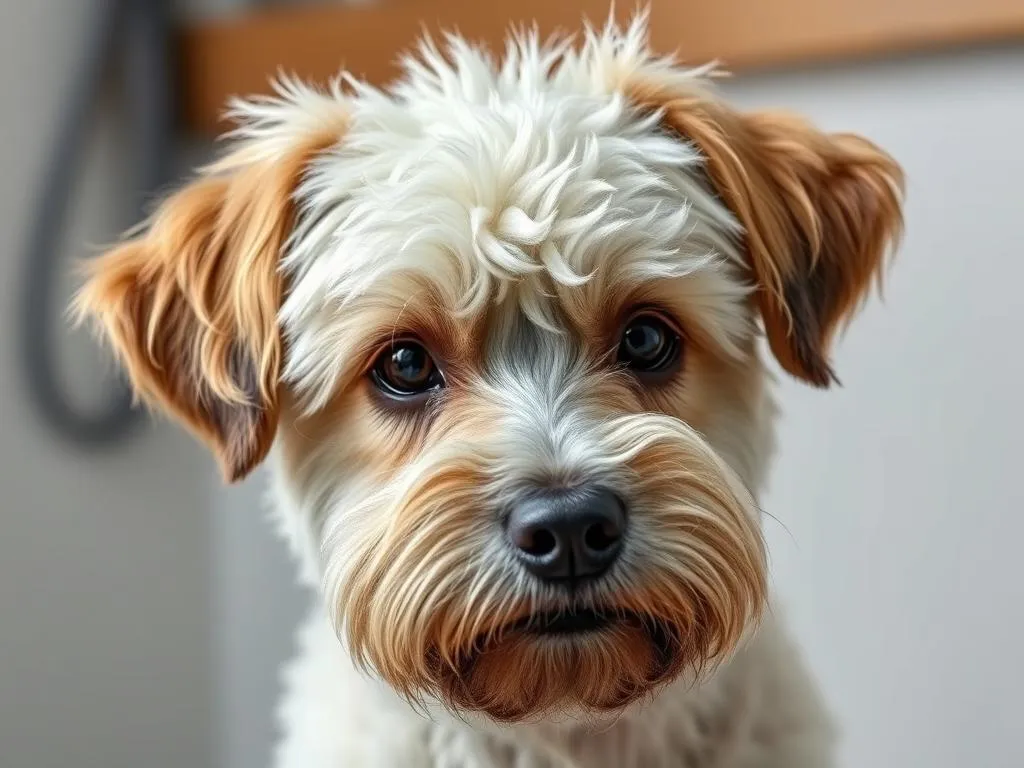
Introduction
Grooming is a vital component of dog health care that extends beyond mere aesthetics. Regular grooming sessions can significantly influence a dog’s physical and emotional well-being. Many dog owners often wonder, how do dogs feel after grooming? Understanding the emotional and physical responses dogs have to grooming can help owners create a more positive experience for their furry companions.
Understanding Dog Grooming
What is Dog Grooming?
Dog grooming encompasses a variety of tasks aimed at maintaining a dog’s hygiene and appearance. Grooming includes several practices:
- Bathing: Cleaning the dog’s coat with appropriate shampoos.
- Brushing: Removing loose hairs and tangles to keep the coat healthy.
- Nail trimming: Keeping nails at a manageable length to prevent discomfort.
- Ear cleaning: Reducing the risk of infections.
- Teeth brushing: Promoting dental health.
The Importance of Grooming for Dog Health
Routine grooming is essential for numerous reasons:
- Physical Health Benefits: Regular brushing helps distribute natural oils throughout the coat, promoting a healthy and shiny appearance. Bathing removes dirt and allergens, while nail trimming prevents painful overgrowth.
- Psychological Benefits: Grooming can serve as a bonding activity between the dog and owner. It can also relieve stress, creating a calming effect on the dog.
The Grooming Process
Pre-Grooming Considerations
Before starting the grooming process, it’s crucial to assess your dog’s coat type and specific grooming needs. Different breeds have varying grooming requirements, and understanding these can make the process smoother. Gather the necessary grooming tools and products, including brushes, shampoos, clippers, and nail trimmers.
Step-by-Step Grooming Guide
Bathing Techniques and Products
- Select a suitable shampoo: Choose a gentle, dog-specific shampoo.
- Prepare the bathing area: Ensure the temperature is comfortable, and have towels ready.
- Wet the coat thoroughly: Use lukewarm water to ensure comfort.
- Apply shampoo: Lather it in, avoiding the eyes and ears.
- Rinse thoroughly: Ensure no shampoo residue remains.
Brushing Methods for Different Coat Types
- Short-haired dogs: Use a rubber grooming mitt or a bristle brush to remove loose hairs.
- Long-haired dogs: Opt for a slicker brush to detangle and remove debris.
- Curly or wiry coats: Use a comb with wide teeth followed by a slicker brush for best results.
Nail Trimming Tips
- Choose the right clipper: Use clippers that suit your dog’s nail size.
- Find the quick: Avoid cutting the quick, as it contains blood vessels and nerves.
- Trim gradually: Take off small amounts to prevent injury.
Post-Grooming Care
After grooming, clean the grooming area to prevent any leftover hair or products from causing allergies. It’s also essential to check for any skin irritations or issues that may have arisen during the grooming process. Rewarding your dog after grooming can reinforce positive associations, making future grooming sessions easier.
Emotional and Physical Response to Grooming
How Do Dogs Feel During Grooming?
During grooming sessions, dogs exhibit various behaviors. Some may show signs of anxiety, while others may be calm and relaxed. Common signs of discomfort or stress include:
- Whining or barking
- Attempting to escape the grooming area
- Tensing up or shaking
Understanding these behaviors can help owners adjust their grooming techniques to minimize stress.
How Do Dogs Feel After Grooming?
After grooming, most dogs display a general emotional response of relief and happiness. Here’s how they might feel:
- Relief: Many dogs feel a sense of relief when the grooming session ends, especially if they were anxious during the process.
- Happiness: A freshly groomed dog often exhibits playful behavior, running around or engaging with toys.
- Relaxation: Post-grooming, dogs may settle down for a nap, content with their clean and comfortable state.
It’s essential for owners to observe their dog’s mood and body language after grooming to ensure they are comfortable and happy.
Factors Affecting a Dog’s Response to Grooming
Several factors can influence how dogs feel during and after grooming:
- Breed differences: Some breeds are more tolerant of grooming than others. For instance, poodles may enjoy the process, while others may resist.
- Early grooming experiences: Dogs that have had positive grooming experiences in their early life tend to handle grooming better as adults.
- Owner’s grooming technique: A gentle and patient approach can make a significant difference in how a dog perceives grooming.
Common Grooming Concerns
Dealing with Anxiety in Dogs
For dogs that exhibit anxiety during grooming, owners can employ several techniques to help ease their fears:
- Desensitization: Gradually introducing grooming tools and sounds can help reduce anxiety.
- Positive reinforcement: Rewarding dogs with treats and praise during and after grooming can create a more positive association.
Common Skin Issues Post-Grooming
After grooming, some dogs may experience skin irritations or allergies. Here’s how to identify and treat minor skin problems:
- Identify irritations: Look for redness, itching, or unusual behavior.
- Use hypoallergenic products: If your dog has sensitive skin, consider using hypoallergenic shampoos.
- Consult a vet: For persistent irritations, it’s best to seek professional advice.
When to Seek Professional Help
Certain signs indicate when it may be time to consider professional grooming services:
- The dog’s coat is too tangled or matted.
- The owner is unsure about grooming techniques.
- The dog exhibits extreme fear or aggression during grooming.
Finding the right groomer can make all the difference in your dog’s grooming experience.
Grooming Tips for Dog Owners
Establishing a Grooming Routine
Regular grooming is vital for maintaining a dog’s health and well-being. Establishing a grooming routine helps owners keep track of their dog’s needs and promotes a healthy coat. Recommended grooming frequency varies based on coat type:
- Short-haired dogs: Every few weeks.
- Long-haired dogs: Weekly to bi-weekly.
- Curly-haired dogs: Every 4-6 weeks.
DIY Grooming vs. Professional Grooming
Both DIY grooming and professional services have their pros and cons:
- DIY Grooming:
- Pros: Cost-effective, convenient, strengthens the bond between owner and dog.
-
Cons: Can be challenging without the right skills, may lead to injuries if not done correctly.
-
Professional Grooming:
- Pros: Experts know how to handle specific coat types, can address complicated grooming needs.
- Cons: More expensive, less frequent bonding time with the dog.
Choosing the right option depends on the dog’s grooming needs and the owner’s confidence in grooming techniques.
Essential Grooming Tools Every Dog Owner Should Have
To ensure effective grooming, every dog owner should have the following tools:
- Brushes: Depending on coat type, select appropriate brushes.
- Shampoo: Choose a gentle, dog-friendly shampoo.
- Nail clippers: Invest in quality clippers for accurate trimming.
- Grooming mitts: Useful for short-haired breeds to remove loose hair.
- Ear cleaning solution: Helps maintain ear health.
Conclusion
The benefits of grooming for dog health cannot be overstated. Regular grooming promotes not only physical health but also emotional well-being. Understanding how do dogs feel after grooming is essential for creating a positive experience. Owners should prioritize grooming as part of their pet care routine, observing their dog’s reactions and adapting techniques accordingly for a happier, healthier pet.
Maintaining a regular grooming schedule and being attuned to your dog’s needs can foster a strong bond and ensure your furry friend remains content and healthy.









